In Studio 1, RTÉ Concert Orchestra's rehearsal space in the RTÉ radio building, 60 musicians (an expansion on the usual 45) are preparing to spend six hours running through John Williams's score for Jaws.
Conductor David Brophy, perusing a screen on his desk on which a specially modified version of the film plays, likens conducting orchestras to riding horses. "They play differently and feel differently under my hands. It's a living thing and it's different every day. The music will feel differently today than it did the last time. I love it."
Meanwhile, orchestra manager Andrew Smith says that managing an orchestra is sometimes like "herding cats". He's joking. I think.
In music you're striving to be the best you can be, so you expect the system to be striving for that as well. That's been letting us down
Morale has not been great over the past decade in our nation's two orchestras. As the national broadcaster faced well-publicised funding struggles, rumours abounded that the two would be amalgamated. This year a specially commissioned report by Helen Boaden, former director of BBC Radio and BBC News, found that there was a demand for both, that they were underfunded, and suggested that the National Symphony Orchestra should be separated off from RTÉ and turned into an institution in its own right.
“The report put in writing what we were all feeling,” says first violinist Bróna Cahill. “In music you’re striving to be the best you can be, so you expect everyone around, the system, to be striving for that as well. That’s been letting us down… Hopefully going forward there’ll be a bit more positivity.”
The Concert Orchestra does a very wide range of material, from live cinema scores to performances in recent weeks of Britten's War Requiem, Handel's Messiah and, on special occasions, festival renditions of pop classics alongside 2FM DJ Jenny Greene.
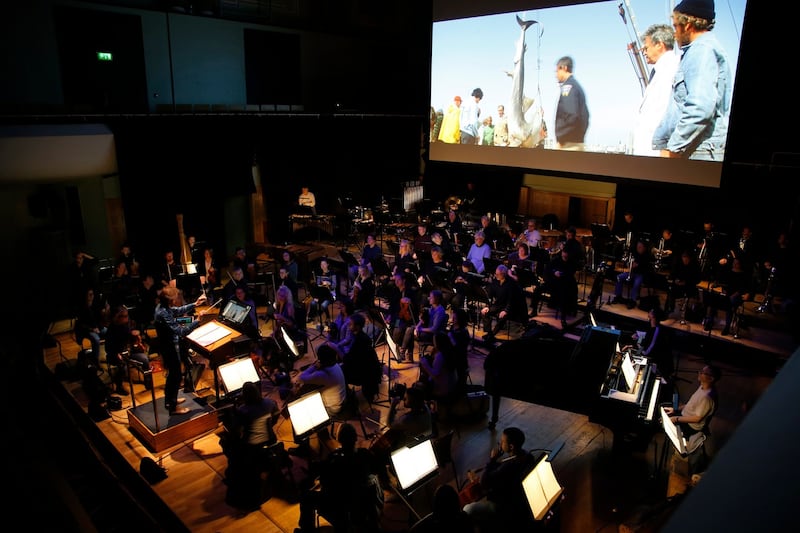
Watching and listening at rehearsal, it's an amazing thing, a 19th century music machine pumping out Williams's score for Jaws with bows moving in unison and trombones pumping like pistons.
For the people in it, this is a workplace. All 45 members are highly skilled, and this is one of the only pensioned and unionised jobs in music. "An orchestra is a pyramid," says viola player David Kenny (28). "The conductor is first. Then you have the concertmaster who is the first place, first violin. Then after that there are section principals – section principal and co-principal."
"So, I'm a tutti violinist," says violin player Hugh Murray (30), "a rank and file section player. It's like a private or something."
The hierarchy is important?
“Everyone in the orchestra has their training with their own opinions and there are some big characters,” says Kenny. “Sixty people with strong opinions?”
“It could be carnage,” says Murray.
Kenny and Murray are among the orchestra’s newest recruits, and they competed with hundreds for their jobs. Classical musicians typically spend their teens and 20s practising. When not in classes or lectures they were alone in their rooms working on technique or playing in quartets or wedding bands to fund themselves. There’s a lot to fund. The average cost of a professional violin is €10,000.
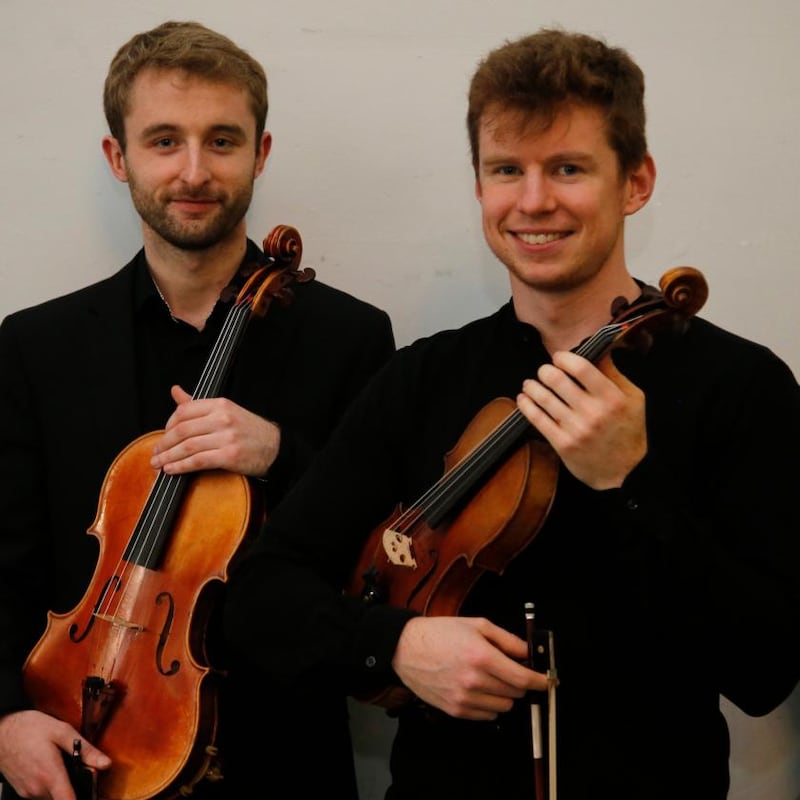
Murray started playing violin at four, bribed to practice with episodes of Thunderbirds. Kenny was five, but changed from violin to viola when he was 11. "As a young boy they tell you, 'the viola's bigger and has a deeper sound and you've big hands'," says Kenny.
“An extremely macho instrument, the viola,” says Murray.
Viola players, incidentally, are the butt of all the musical jokes “Violinists get a bit notiony sometimes, and take it out on the viola players,” says Murray.
“Viola players would be more chilled out,” says Kenny. “The violinists are highly strung.”
“Here we go,” says Murray.
"Why are viola jokes so short?" says oboe-player David Agnew during the first of the day's breaks. "So the brass players can understand them."
We're in the radio building café, and I'm standing with some orchestral veterans. "I'm the longest serving," says flautist Deirdre Brady. "I joined in 1977."
"You're meant to act surprised," says clarinettist and Irish Times dance correspondent Michael Seaver. "Oh my God I can't believe it!"
“I was one of the youngest when I joined, and I’m one of the eldest now,” says Agnew. “1981 was my first year.”
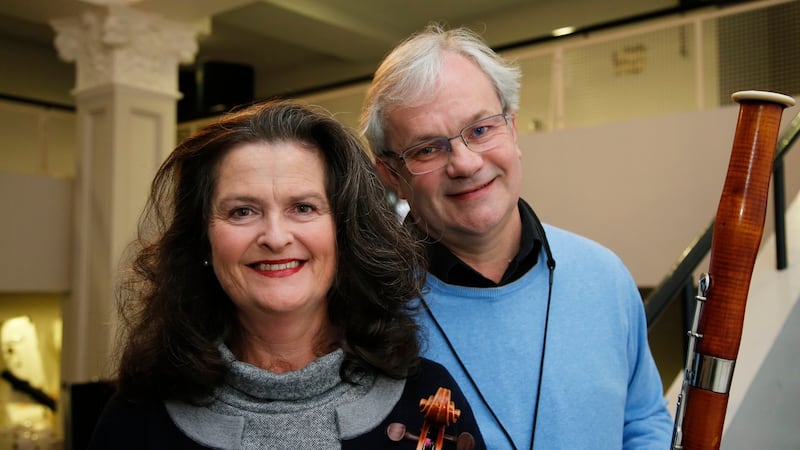
Bassoonist John Leonard met his wife, second violinist Elizabeth, because they both worked in the orchestra. Does that happen often?
“It does,” says Agnew. “But it doesn’t usually stick.”
"It took some time, quite frankly," says John Leonard. "We met at the bus stop the very first time I played with the orchestra [but] it all came about in Spain at the expo in Seville in 92."
"The hot sun, the sangria," says Agnew, who seems strangely invested in this tale of romance. He starts to sing To all the Girls I've Loved Before.
"It's a big family, and people look out for each other," says Elizabeth Leonard, wisely changing the subject.
Is there a personality type that suits orchestra life?
“You have to be a little obsessive compulsive to start with, to do all the practice,” says Agnew. “Then you have to be socially dysfunctional enough to want to play with just musicians and not to play football.”
Some people, I notice, have more free time on their hands. “I would have less to do than the violins certainly,” agrees Agnew.
What does he do when not playing? “He looks at his phone,” says Brady.
"Have you seen his Facebook page?" says Seaver.
“I organise my brain differently,” says Agnew. “It just has to be awake when they need me.”
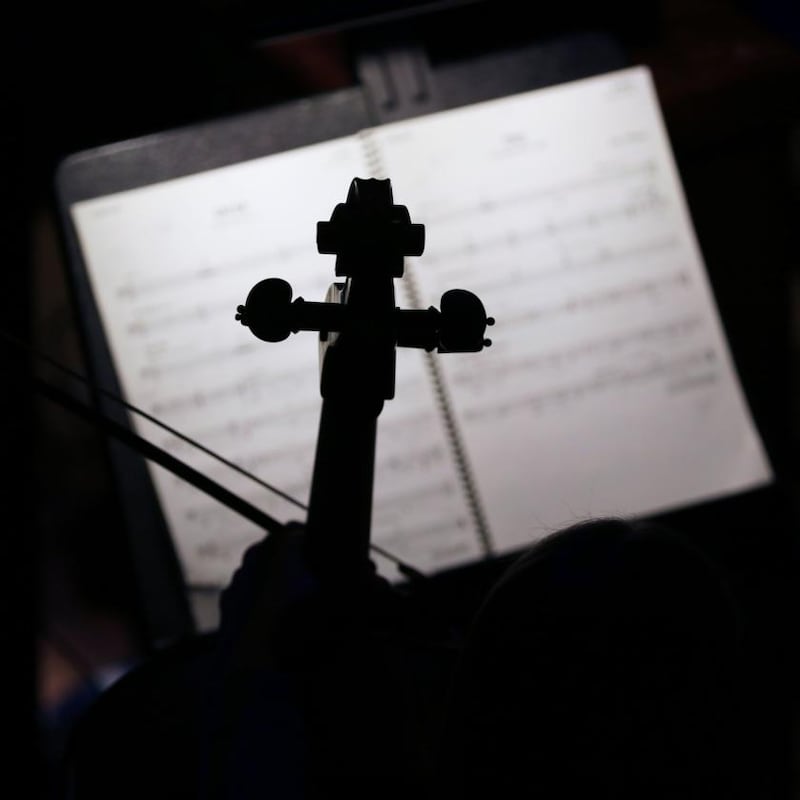
The percussionists have even fewer notes to play than the oboists. Every percussionist knows the Far Side cartoon "Roger screws up" in which hapless Roger awaits his big orchestral moment holding just one cymbal. "It's happened to us all," says percussionist Stephen Kelly with a sigh.
"The thing is," says timpanist Ollie Taylor, "you might have one note but if you mess up that one note everybody knows."
Percussionists have to move between large unwieldy instruments mid-performance, so a lot of the work is in pre-planning.
“You work out the plan beforehand and spend an hour or two on that, draw it out and show it to everybody,” says Kelly, who comes from musical dynasties on both sides of his family, and whose wife is also a musician.
Do they play music at home?
“Never,” he says, as though I’ve suggested he do a bit of recreational book-keeping or dentistry.
Near the percussionists, at the back, are the brass players.
“Dodgy characters,” according to Deirdre Brady.
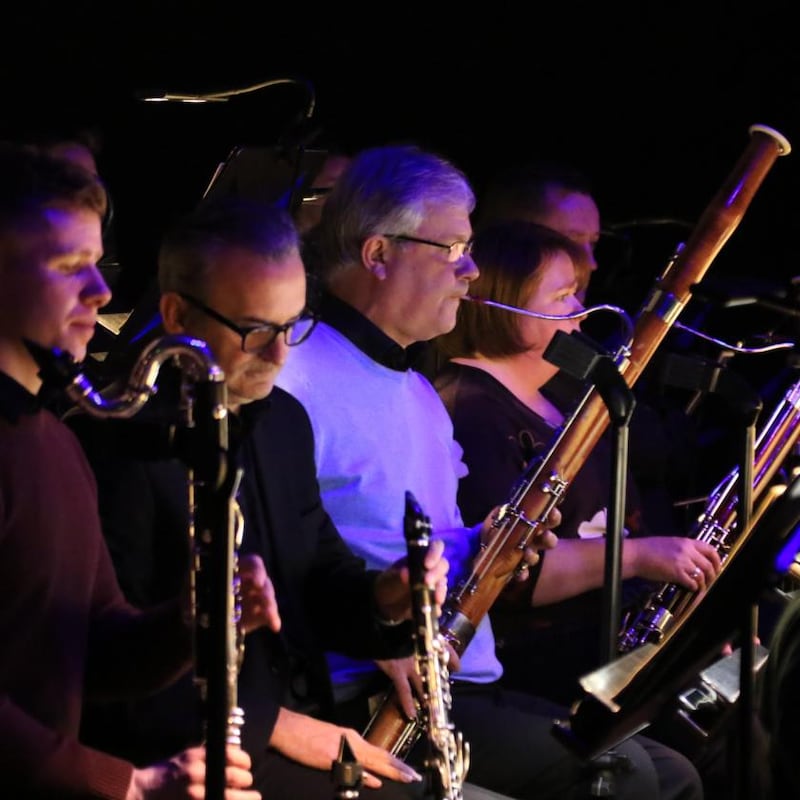
"You can get away with a lot at the back," admits trombonist Christopher Nery. "We've a lot of free time…We'd be coming in maybe 5 per cent of the time in short bursts….We're also near the door so we can nip out."
What are the similarities with an office job?
“Gossip,” says Nery. “There’s always lots of gossip in RTÉ... But it’s an odd lifestyle, a very asymmetrical week and the antithesis to a nine-to-five job. You’re working when everyone else isn’t.”
The next evening at the National Concert Hall, in a backstage area filled with instrument cases, principal French horn player Cormac Ó hAodáin tells me about how difficult it has been for the orchestras in recent years with cutbacks and rumours swirling about how the orchestras might be amalgamated.
“There’s a lot of stress around. People are upset and angry… We haven’t had a principal conductor in two years and we really need one…. I think it contributes massively to the insecurity of the orchestra as an entity.
“Also, we don’t have a general manager. Two key positions associated with the orchestra are missing. So it’s a ship without a captain. It leads to confusion and insecurity and loss of direction”
Orchestral musicians, he says, are driven, committed people. “To be a really good musician you have to be unbelievably dedicated and disciplined. We spend a lot of our time practising on our own to get here…. We are very, very focused people which is maybe really good to achieve the level you want to achieve but if we fall out with colleagues I think we tend to have very polarised viewpoints... I had a job in London where the fourth horn player didn’t speak to me for the first six months.”
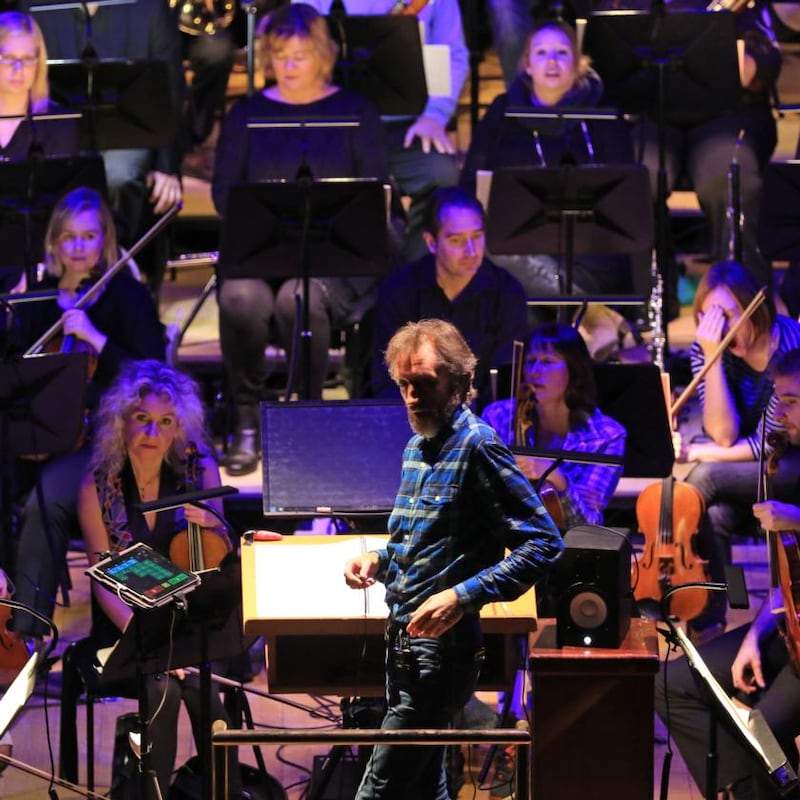
Horn players, he says, tend to be most vocal about things, “the troublemakers in the orchestra”.
“I think that’s because we play a very challenging instrument, an instrument that has certain risks.” He talks about the danger of “hitting a harmonic above or below the one that you want… “I often think that if we were in the army we’d be the bomb disposal team.”
Sitting upstairs in a little café for performers, first violinist Bróna Cahill is curious about what the others have been saying. “I bet you the brass were saying ‘poor us.’ They’re the prima donnas. ‘Oh we have to watch our lips’.” She laughs.
I tell her that they say that the first violinists are highly strung. “We are highly strung. We have a million more notes to play. It has to be the right part of the bow. It has to be in tune. Eight people trying to play with the right sound.”
The musicians here play to the death. I've sat there snotting all over the fiddle. When they ring in sick, they are really sick
She talks about the high level of commitment all of her colleagues have.
“The musicians here play to the death. I’ve sat there snotting all over the fiddle. When they ring in sick, they are really sick.”
And there are job-related injuries, she says. “I have had injuries in my arms, shoulder and neck… It’s a common thing… We’re kind of angling to get some kind of occupational therapist.”
She's the concertmaster tonight (Mia Cooper the usual leader is away) which means that if her colleagues are confused by anything they will look to her. She demonstrates how she might interpret an instruction in how she wields her bow or moves her body.
Was the orchestra always an end goal for her? She toyed with the idea of being a soloist, she says, but she once did a tour with a French pianist “and it made me think that the life of a soloist was really lonely… a different orchestra every week, different people… different countries.”
At a neighbouring table second violinists Siubhan Ni Ghriofa and Camille Farrar and oboist Suzie Thorne are considering a Tupperware box of chilli-filled macarons baked by "resident baker" Farrar. "There'll be steam coming out of your ears," warns Ni Ghriofa as I take one.
“You might have got one with more chilli in it,” says Farrar, when I have to go get a drink
They find ways to blow off steam. During this afternoon's onstage rehearsal for Jaws, Ni Ghriofa wore a fin on her head and put a fake severed foot beneath Geraldine O'Doherty's harp. "I like the props," she says.
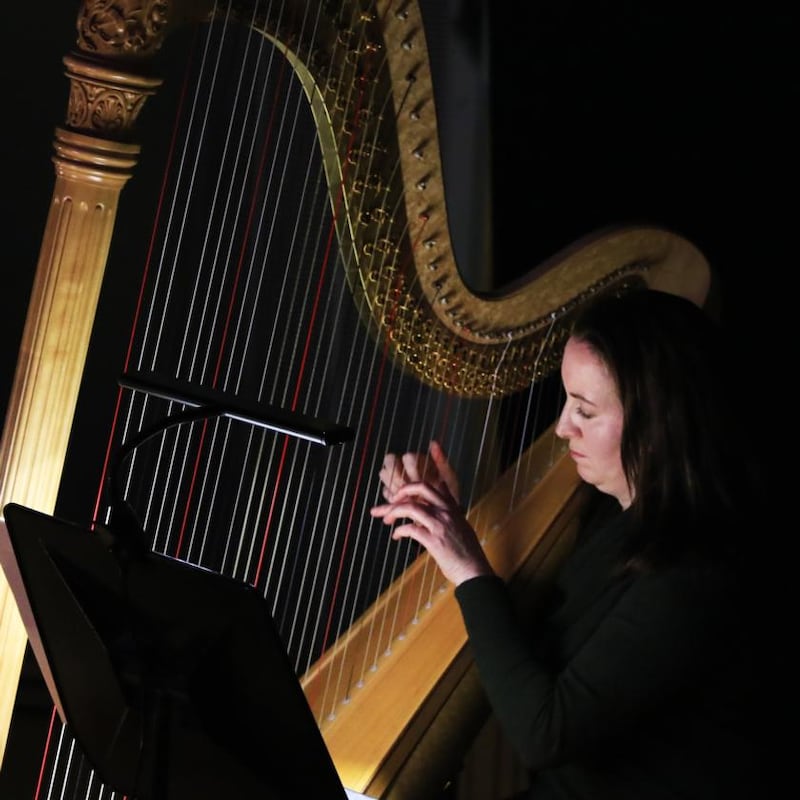
Violin players have to play almost constantly, she says. “When you get a piece where there are lots of sections where you’re not playing its really weird. I go to a weird place.”
“The brass players are on their phone all the time,” says Farrar.
“When the strings have nothing to do we just stare,” says Ni Ghriofa.
They all recall the feeling they had when they first played with an orchestra.
“It’s not about who’s got that solo or that solo,” says Ni Ghriofa. “It’s an orchestra. It’s about a combined sound.”
“When you’re practising solos you have freedom to do what you want,” says Farrar, “but when you come to an orchestra you have to rein it in.”
“Some people really struggle with that,” says Ni Ghriofa.
“It’s very powerful being part of a bigger thing,” says Thorne. “You could never achieve that if you were on your own.”
When French horn player Fearghal Ó Ceallacháin joined the RTÉ Concert Orchestra in 1986, his future father-in-law Johnny Tate was working there as a musician and arranger. Tate had joined when it was called the Light Orchestra, was largely studio-based with its own radio show (The Sound of the Light) and no real remit for public concerts.
That all changed, says Ó Ceallacháin, with the building of the Concert Hall in the 1980s and an increasing need to cater to a fragmenting audience. “It’s like the fibre in our diet, the core classical repertoire,” he says. “[But] we don’t do stuff you have to jump through hoops to appreciate.”
He's not sure how the orchestra has changed in his own time there. "We recently played in Clifden and there were pictures on the wall of the orchestra. You look and see who's there and who has gone and who has passed away. And it's funny because it always feels continuous.
“There’s the old story of how many planks do you change in a ship before it’s a different ship. It still feels the same as people pass through. There’s a sort of collective intelligence.”












